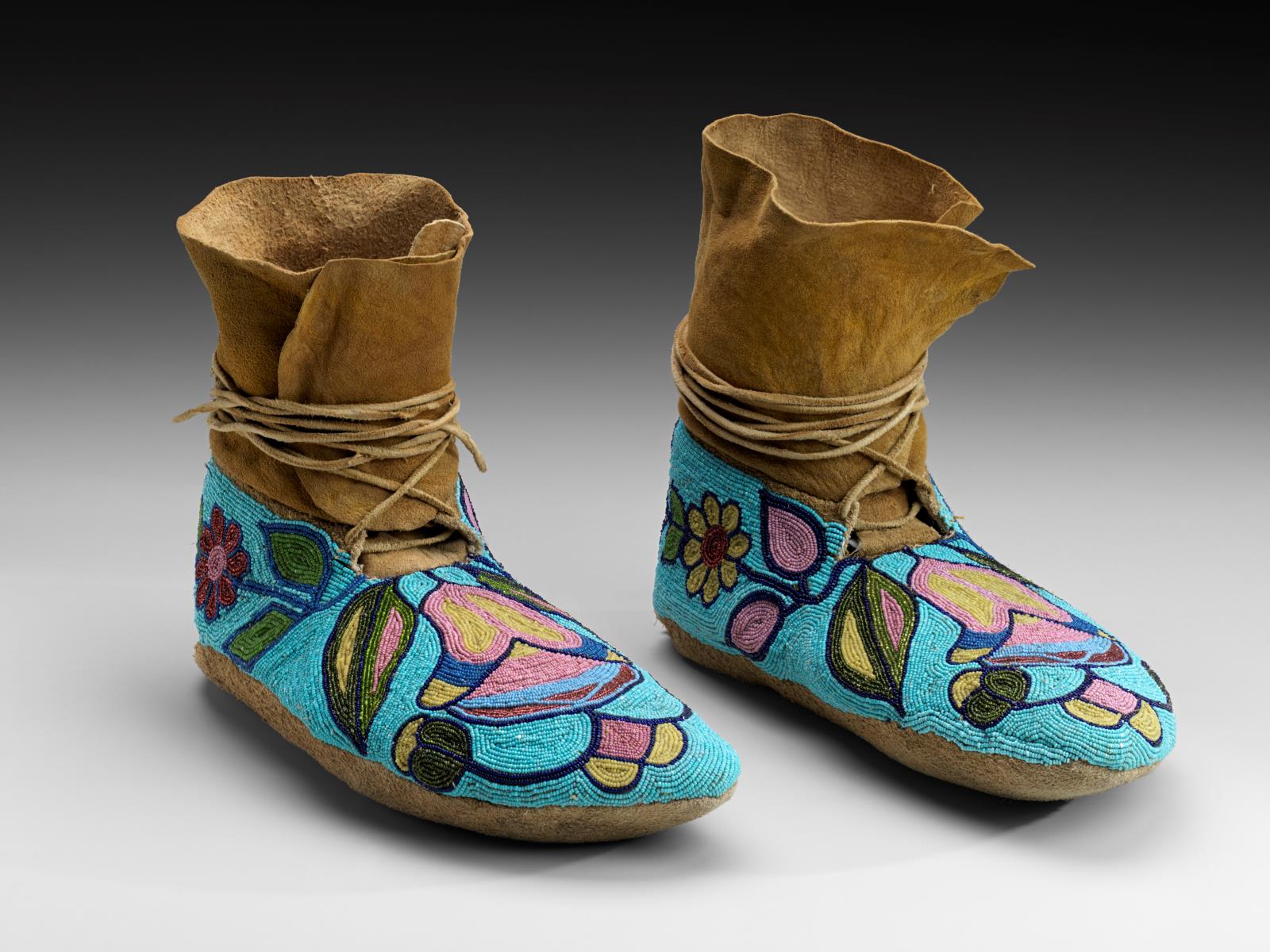
These exquisitely beaded moccasins were the first of Nez Perce culture (Columbia River Plateau) to enter the MFA’s Textile and Fashion Arts collection. They arrived in 2016 during the early weeks of my joining the department—exceptionally beautiful and flawlessly executed. My eyes followed, with the wonder of a child, the hand of the maker patiently working her stitches over the buckskin surface, tracing the fluid contours of a life-affirming floral design and taking delight in bright, vivid colors rendered in tiny faceted glass beads that sparkled with light.

Floral beadwork of the Nez Perce (Nimi’ipuu) and other Plateau tribes, a style that came to supplant preceding geometric styles, arose during the mid-nineteenth century arrival of Protestant missionaries and their encouragement of assimilation, tribal land cessations, and the forced habitation of Native Americans on reservations with a greatly reduced land base. Efforts by both the US government and the Church to destroy Native culture and religion, including the outright banning of tribal ceremonies and Native medicine practices in the late nineteenth century, intensified an underground resistance amongst the Plateau tribes. Native American expression through floral motifs worked in glass beads was a way to preserve cultural traditions and values on a variety of levels. Access to trade materials and exposure to American-made floral printed cloth and wallpapers, together with a close identification with plant life as integral to Native American beliefs, resulted in the emergence of a distinctive beadwork tradition that allowed Native Americans to produce artistically beaded objects for trade while simultaneously communicating distinct tribal floral styles in the highly-prized decorated clothing they embellished for themselves.
Click for description, detail view and collection data on mfa.org
Objects in Brief is a randomized showcase of the MFA, Boston’s encyclopedic Textile and Fashion Arts collections. A featured object is indicative of the author’s curiosity and chosen so she may learn about its material and structural properties, function, history, and greater story. These “quick studies” have led to more in-depth explorations posted in A Closer Look.

These moccasins are truly beautiful! The design and colors break my visual stereotype of very patterned pieces- especially if I just look at the beaded part.The turquoise color against the leather…beautiful. Were these actually worn? They look so perfect. Thanks again, Catherine.
I agree Suzanne – these are very special. Many of the images I’m seeing of Nez Perce beadwork show this blue color in particular covering large areas of the beaded field. This pair was acquired originally by a dealer who purchased them directly from a Nez Perce woman in the 1970s; they changed hands relatively few times. According to Jennifer Swope, our curator responsible for bringing these moccasins into the collection, the moccasins were made in the 1890s for a member of the Nez Perce, not to be sold in the tourist trade. If they were ever worn, they were well cared for!